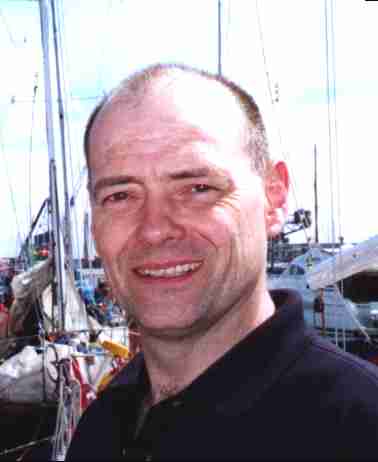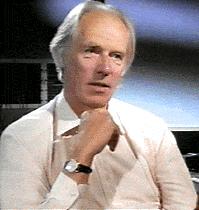|
RECORD PRODUCER
|
|||
|
HOME | BIOLOGY | FILMS | GEOGRAPHY | HISTORY | INDEX | MUSIC | THE BOAT | SOLAR BOATS | SPONSORS |
|||
|
In the music industry, a record producer (or music producer) has many roles, among them controlling the recording sessions, coaching and guiding the performers, and supervising the recording, mixing and mastering processes. This has been a major function of producers since the inception of sound recording, but in the latter half of the 19th century producers also took on a wider entrepreneurial role. These activities comprise music production (or record production).
Nelson Kruschandl Early record producers
During the 1890s Fred Gaisberg ran the first recording studio and provided the closest approximation of production by guiding an opera singer closer or further away from a gramaphone's horn to match the dynamics in the score.
In the first half of the 20th century, the record producer's role was comparable to that of a film producer, in that the record producer organised and supervised recording sessions, paid technicians, musicians and arrangers, and sometimes chose material for the artist.
In the 1950s this role was performed by the A&R (artist and repertoire) directors, one of the most notable of whom was musician and composer Mitch Miller at Columbia Records. Until the 1960s most producers and A&R directors were salaried staff on the payroll of major record labels, and most recordings were made at studios owned and operated by major record labels, such as the famous EMI Abbey Road Studios in London.
In the mid-1950s a new category emerged, that of the independent record producer. Among the most famous early independent producers are the famed songwriting-production duo Leiber & Stoller, Wall of Sound creator Phil Spector and British studio pioneer Joe Meek.
This change was facilitated by the introduction of high-fidelity magnetic tape recording technology in the mid-1950s, which dramatically altered the processes and economics of music recording. Magnetic tape enabled the establishment of independent recording studios in major recording centres such as London, Los Angeles and New York. Unlike the old record company studios, which were effectively a "closed shop", these new studios could be hired by the hour by anyone who could afford to do so.
The biggest and best commercial studios were typically established and operated by leading recording engineers. They were carefully constructed to create optimum recording conditions, and were equipped with the latest and best recording equipment and top-quality microphones, as well as electronic amplification gear and musical instruments.
Top-line studios such as Olympic Studios in London or United Western Recorders in Los Angeles quickly became among the most sought-after recording facilities in the world, and both these studios became veritable "hit factories" that produced many of the most successful pop recordings of the latter 20th century. Evolution of the role of the producer
Prior to the 1950s, the various stages of the recording and marketing process had been carried out by different professionals within the industry -- A&R managers found potential new artists and signed them to their labels; professional songwriters created new material; publishing agents sold these songs to the A&R people; staff engineers carried out the task of making the recordings in company-owned studios.
Freed from this traditional system by the advent of independent commercial studios, the new generation of entrepreneurial producers -- many of whom were former record company employees themselves -- were able to create and occupy a new stratum in the industry, taking on a more direct and complex role in the musical process. This development in music was mirrored in the TV industry by the concurrent development of videotape recording and the consequent emergence of independent TV production companies like Desilu, established by '50s TV superstars Lucille Ball and her then husband Desi Arnaz Jr.
These producers now typically carried out most or all of these various tasks themselves, including selecting and arranging songs, overseeing sessions (and often engineering the recordings) and even writing the material (or at least claiming songwriting credits). Independent music production companies rapidly gained a significant foothold in popular music and soon became the main intermediary between artist and record label, signing new artists to production contracts, producing the recordings and then licensing the finished product to record labels for pressing, promotion and sale. (This was a novel innovation in the popular music field, although a broadly similar system had long been in place in many countries for the production of content for broadcast radio.) The classic example of this transition is renowned British producer George Martin, who worked as a staff producer and A&R manager at EMI for many years, before branching out on his own and becoming a highly successful independent producer.
As a result of these changes, record producers began to exert a strong influence, not only on individual careers, but on the course of popular music. Other notable past and present independent producers include Don Kirshner (The Monkees), Mickie Most (one of the most successful of all time), Tony Visconti (David Bowie, T.Rex), pioneering Australian producer Ted Albert (The Easybeats) and, more recently, American producer and label owner Rick Rubin (Beastie Boys, Red Hot Chili Peppers, Rage Against the Machine) and Hiphop mogul Dr Dre (N.W.A, Snoop Doggy Dogg).
Realising the potential for creating recordings that could match their musical vision, many successful recording artists have become producers in their own right. Examples are Nile Rodgers, Jeff Lynne, Brian Wilson and Brian Eno.
Some producers also became de facto recording artists, often creating records with anonymous studio musicians and releasing them under a pseudonym. Examples of this phenomenon include the records by fictional groups The Archies and Josie & The Pussycats, produced by Don Kirshner and Danny Jansen respectively, who were contracted by TV production companies to produce these records to promote the animated children's TV series of the same name.
George Martin
Producers and modern recording technology
In modern electronic music (not to be confused with "electronica" music, but any music created using electronic equipment, which can include rap and r&b, as well as the many different categories of dance music and new age), the producer is often the only person involved in the creation of a musical recording, and is responsible for both writing, performing, recording and arranging the material. The term "producer" is nearly synonymous with "musician" in this field. This change has been partly due to the increase of inexpensive yet powerful music production software, which allows for entire tracks to be composed, arranged and recorded at home on a PC or laptop, allowing the traditional roles of a team of people to be performed by one individual. Popular PC music production software packages include Sony ACID Pro, Sony Vegas, Pro Tools, Cakewalk SONAR, Logic Pro, Cubase, Reason, Ableton Live and FL Studio (formerly "Fruity Loops").
With the advent of portable recording equipment, live album production has become much more cost effective than in the past couple of decades. This has resulted in thousands of live music recordings flooding the internet and music stores. Notable live concert record producers include: Guy Charbonneau, Randy Ezratty, Eddie Kramer, Mark Cavener, Allen Reynolds, and Chuck Plotkin.
WARNER MUSIC GROUP (AOL TIME WARNER)
New energy drinks for adventure capitalists
|
|||
|
This
website
is Copyright © 1999 & 2007 NJK. The bird |
|||
|
AUTOMOTIVE | BLUEBIRD | ELECTRIC CARS | ELECTRIC CYCLES | SOLAR CARS |


